POLYMER INFILTRATION AND PYROLYSIS (PIP) PROCESSING
Starfire Polymer-to-Ceramic™ Technology uses Starfire’s unique pre-ceramic polymers to create hard, tough ceramic materials which can be used in numerous applications. These polymers are available in a range of viscosities and compositions that allow chemistry tailoring and processing flexibility to fit within component manufacturing restrictions and meet final product property targets. Upon pyrolysis in an inert environment and to a minimum of 850°C, the polymers decompose into ceramic materials and form a ceramic body. Starting with a porous green body, polymer is infiltrated into the open pores. The green body is then pyrolyzed in an inert environment causing the polymer to transform from a polymer into an engineered ceramic.
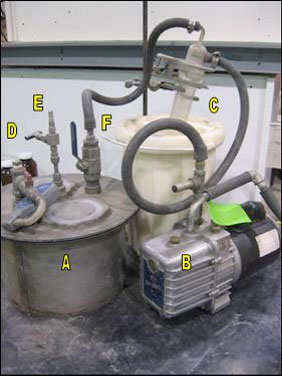
How does vacuum infiltration take place?
Vacuum infiltration is accomplished in a simple three (3) step process.
- Apply vacuum to the porous body; 30 minutes minimum
- Introduce polymer through vacuum infusion; 30 minutes minimum
- Allowing the porous body to equilibrate to atmospheric pressure conditions; 30 minutes minimum
A typical vacuum infiltration station is shown to the right and consists of:
- Vacuum vessel (A)
- Vacuum pump (B)
- Optional cold trap (C)
The vacuum vessel (A) used for infiltration should be capable to achieve <1 torr (130 Pa) safely and should have three (3) valved ports:
- port with vacuum gage (D)
- port for polymer infusion (E)
- port for vacuum or vacuum pump (F)
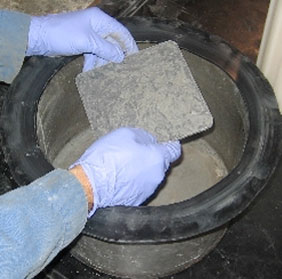
Apply Vacuum:
Load a porous body, or “part”, into the vacuum vessel and seal. Remove air from the part and vessel by applying vacuum to the vessel until <1 torr is achieved. Hold for 30 minutes minimum. Optional: Insert a cold trap between the vacuum port of the vacuum vessel and the vacuum pump to condense all low molecular weight species
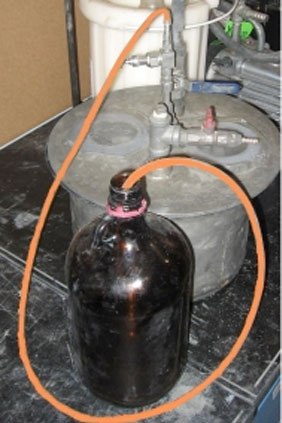
Introduce Polymer:
Introduce polymer into the vacuum vessel through a vacuum hose; one end connects to the vessel and one end is submerged into the polymer. Maintain <1 torr (130 Pa) and ensure parts are completely covered with polymer. Hold for 30 minutes minimum. Optional: Extend the hold time until any significant bubbling subsides.
Backfill:
Break vacuum pressure and slowly reintroduce atmospheric pressure to the vessel. Hold for 30 minutes minimum.
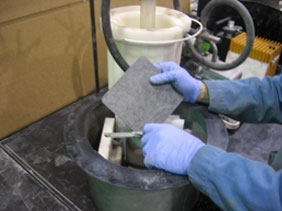
Clean off the Part of Excess Polymer:
Clean off the parts of any excess polymer using a smooth spatula or a squeegee, recovering any unused polymer. Prepare the parts for pyrolysis by loading them onto a graphite plate.
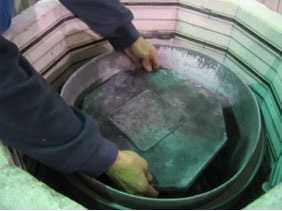
Pyrolysis:
Load part and graphite tooling into the internal retort of the pyrolysis vessel and pyrolyze in an inert environment. Process through pyrolysis and cool-down under an inert environment until 100°C or cooler
